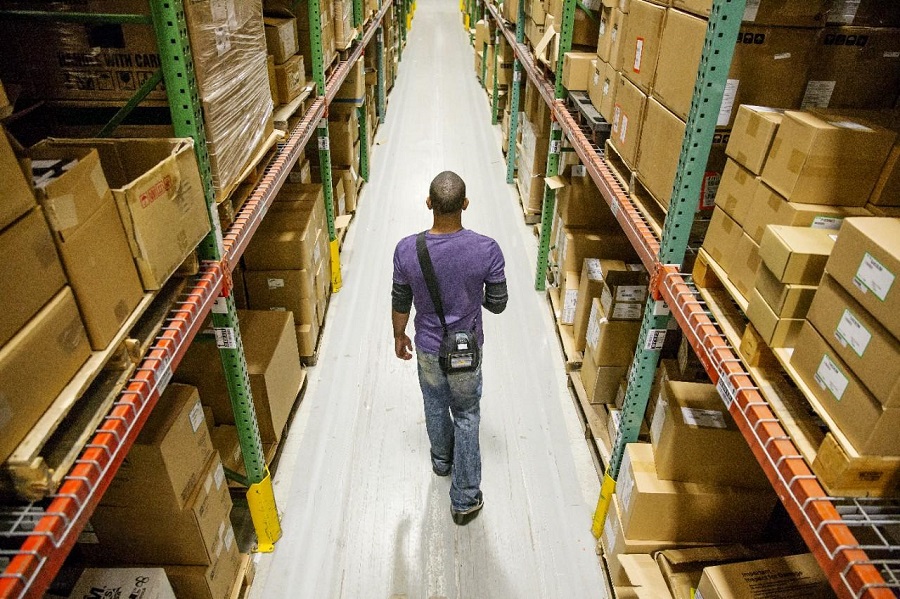Warehouse employees are at a high risk of sustaining back strains/sprains and other stress injuries. Those injuries cost billions each year in worker’s compensation claims and can erode productivity, increase costs, and damage employee morale.
The reason employees are prone to these types of injuries is because they often engage in manual material handling tasks such as lifting, bending, stretching, reaching, and pushing/pulling boxes, crates, equipment, and other items.
These manual activities can contribute to musculoskeletal disorders. There are millions of reported cases of these types of strains and injuries annually, and according to Liberty Mutual, the largest workers’ compensation insurance provider in the U.S., overexertion injuries cost employers $13.4 billion each year.
How can companies reduce the risk of these injuries? The key is to focus on improving warehouse ergonomics. Poor ergonomics can lead to fatigue and injuries. Ergonomic improvements, on the other hand, not only reduce physical strain but can also improve productivity, reduce absenteeism, and boost morale.
Mobile Printing Improves Ergonomics
One common warehouse activity that increases fatigue and physical stress is walking — employees (particularly during picking and putaway) walk back and forth between workstations, racking, shipping, and receiving to retrieve labels and pick lists, and then move goods.
Lightweight mobile printers can reduce unnecessary walking by making it possible for employees to generate pick lists and label goods anywhere in the warehouse: They are no longer tethered to a stationary workstation.
Mobile printing can improve productivity, and in some cases can generate a return on investment in less than a year in a warehouse. As a bonus, allowing point-of-activity printing can also reduce errors and shipping mistakes, and improve throughput.
That’s because all of that walking back and forth creates too many opportunities for distraction. If those long walks also involve chatting with co-workers, attending to other tasks, or other diversions, employees are much more likely to grab the wrong labels or put the labels on the wrong package/item.
Ergonomics at the Mobile Workstation
Hip-worn devices aren’t the only answer when it comes to ergonomic barcode printing operations. Desktop-style barcode label printers can also be turned into mobile unites when incorporated into a mobile workstation.
Mobile workstations that include on-board power, along with all of the data collection, computing and printing devices required to complete a task, can also improve warehouse ergonomics. These workstations are flexible, adjustable, and also help reduce the amount of traveling back and forth to fixed equipment for high-volume labeling operations.
It’s important to create an ergonomic workstation environment that emphasizes proper posture whether the employee is sitting or standing. Shelving and racks on the workstation should be placed to reduce stretching and straining, and the equipment should be adjustable to accommodate employees of different heights.
These workstations can be outfitted with industrial-grade label printers such as the Zebra Xi series of printers, which provides reliable printing with minimal intervention by the operator. Zebra also offers compact industrial printers like the ZT200 Series and ZT400 Series that can be easily integrated into these mobile workstation solutions.
Workplace injuries are costly and a drag on productivity. While there are many ways to improve warehouse ergonomics and reduce the risk of these injuries, mobile barcode printers and workstations can do their part by reducing fatigue and unnecessary movement. Happier and healthier workers can get more work done faster, and do so with fewer errors by having access to label printing capabilities anywhere in the warehouse.





